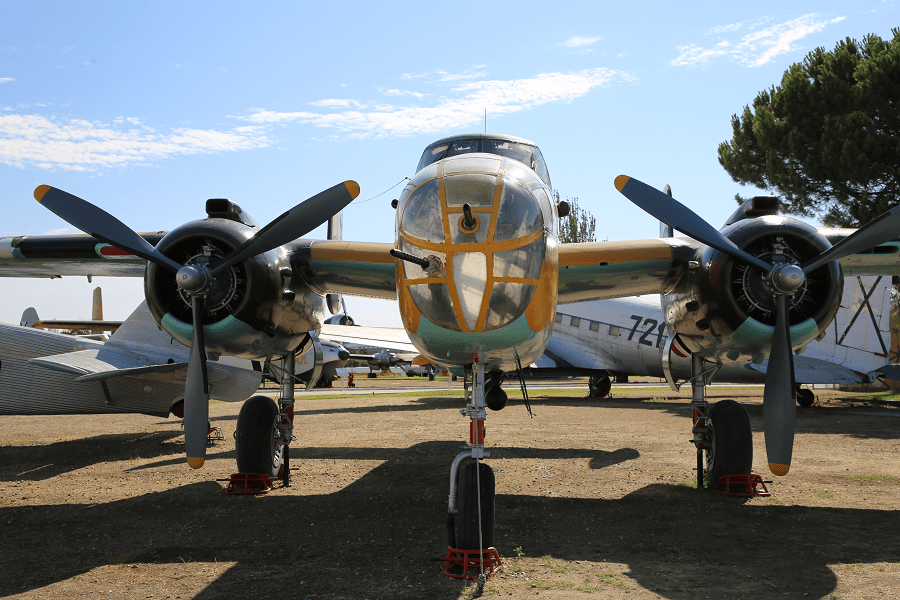The North American B-25 Mitchell is an American medium bomber that was introduced in 1941 and named in honor of Major General William “Billy” Mitchell, a pioneer of U.S. military aviation. Used by many Allied air forces, the B-25 served in every theater of World War II, and after the war ended, many remained in service, operating across four decades. Produced in numerous variants, nearly 10,000 B-25s were built. These included several limited models such as the F-10 reconnaissance aircraft, the AT-24 crew trainers, and the United States Marine Corps’ PBJ-1 patrol bomber.
Manufacturer: North American Aviation (NAA)
First flight: 19 August 1940
Introduction: 1941
Retired: 1979 (Indonesia)
Primary users: United States Army Air Forces, Royal Air Force
Number built: 9,816
General characteristics
Crew: 5 (one pilot, navigator/bombardier, turret gunner/engineer, radio operator/waist gunner, tail gunner)
Length: 52 ft 11 in (16.13 m)
Wingspan: 67 ft 7 in (20.60 m)
Height: 16 ft 4 in (4.98 m)
Wing area: 618 sq ft (57.4 m2)
Empty weight: 19,480 lb (8,836 kg)
Max takeoff weight: 35,000 lb (15,876 kg)
Powerplant: 2 × Wright R-2600-92 Twin Cyclone 14-cylinder two-row air-cooled radial piston engines, 1,700 hp (1,300 kW) each
Performance
Maximum speed: 272 mph (438 km/h, 236 kn) at 13,000 ft (4,000 m)
Cruise speed: 230 mph (370 km/h, 200 kn)
Range: 1,350 mi (2,170 km, 1,170 nmi)
Service ceiling: 24,200 ft (7,400 m)
Armament
Guns: 12–18 × .50 in (12.7 mm) machine guns and 75 mm (2.95 in) T13E1 cannon
Hardpoints: 2,000 lb (900 kg) ventral shackles to hold one external Mark 13 torpedo
Rockets: racks for eight 5 in (127 mm) high velocity aircraft rockets (HVAR)
Bombs: 3,000 lb (1,360 kg) bombs













